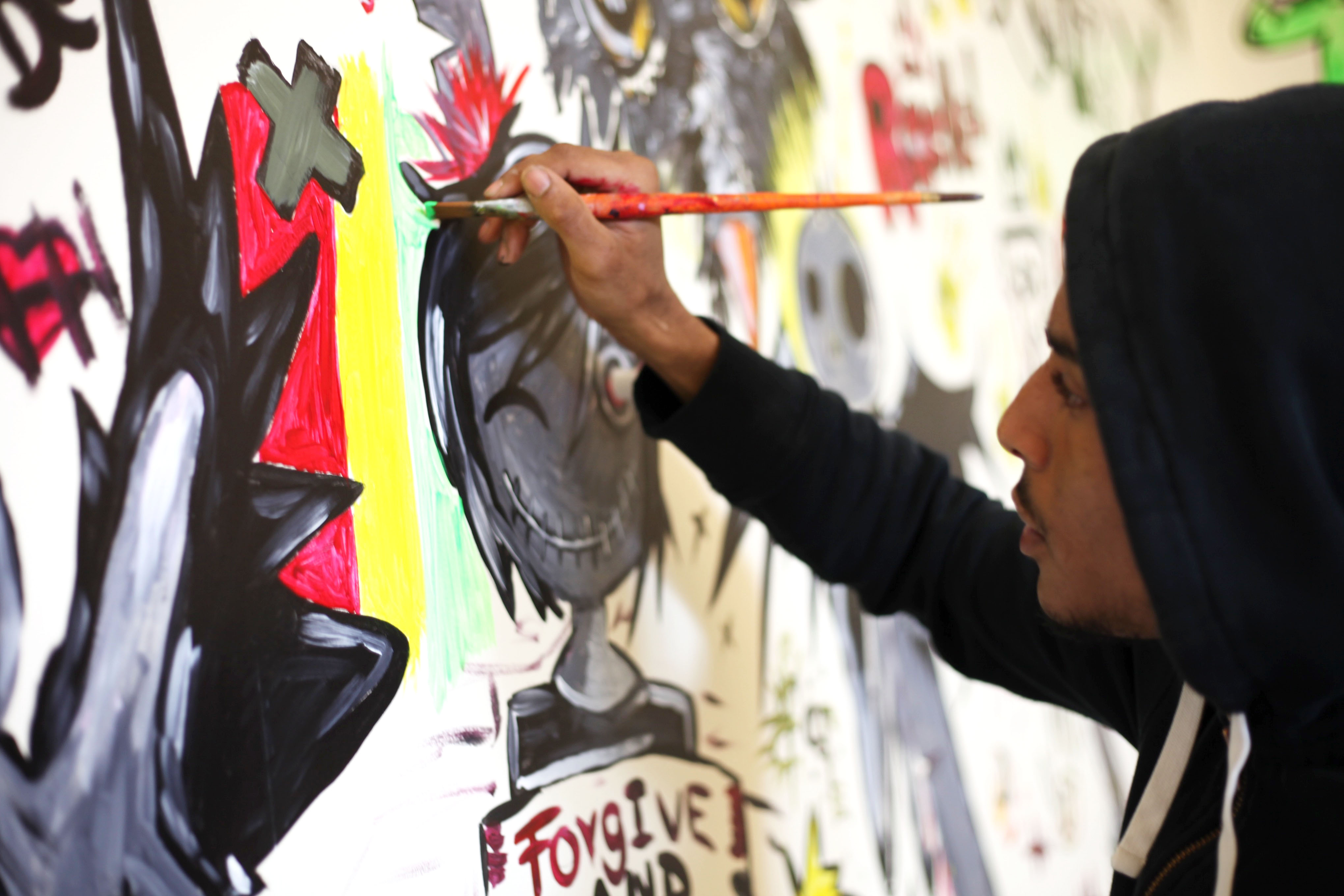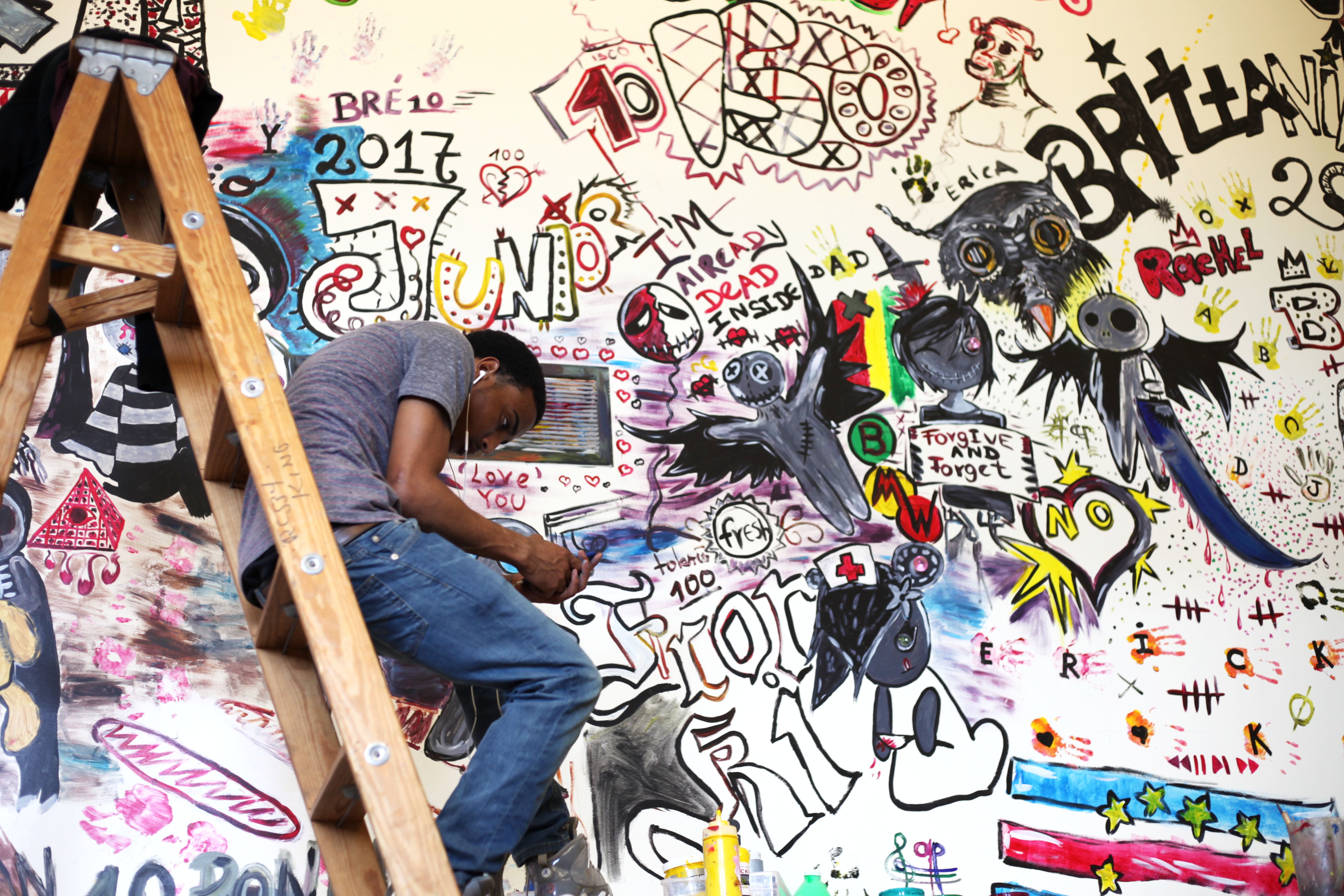The word agency describes the capacity of a person to act in a given environment. By analogy, it could be the capacity of a student artist to create in the art classroom. But who makes the art-making decisions in that environment? Is it my job, as the teacher, to decide what will get made and how, or do I hand over some decisions to my students and guide them in the process?
I create assignments through which personal, relevant, and challenging ideas can be investigated
One of my big teaching objectives is to give as much control over decisions to my students as I can. This objective is complicated by their range of skill levels and experiences as well as the original ideas that they bring into the art room. My particular teaching situation is further complicated by the shortage of time and space in which to contemplate abstract or symbolic concepts. The school’s urban setting presents challenges that focus most of my students’ energies on their basic survival.
I try to create assignments through which personal, relevant, and challenging ideas can be investigated, not assignments in which the outcome is determined from the beginning. In many Art21 videos, the majority of the featured artists say: “I don’t know what it will look like in the end; I start the process and see where it goes.” I want that to be the case for the students’ process in the art room. The assignments that I give are mostly about the physical structure of objects or two-dimensional spaces, with the aim being that the concepts and ideas will emerge from the objects or drawings/paintings through the process of making. The greatest challenge to this open-ended process is that my students are still learning about art and about making art. They don’t often have the basic skills and tools of art making and have to learn through the process. They don’t always recognize key moments of the process of making: when to stop, when to take a risk, when to try something different, when to fall back on a reliable, tested routine. They also often feel pressured to connect their art to an important issue because that’s what they have been trained to do in other art classes. I steer them away from big issues and more toward personal investigations while they build the practical and mental skills necessary to bring their project to a logical conclusion.
The school community empowered them to operate as mature artists
The greatest evidence that agency is being transferred to the students is when they realize their artistic powers and start using the art room as their studio. From my years of teaching, I recall a few instances when a student artist found a personal voice and vision and created work entirely separate from grades, assignments, and requirements. Aside from creating powerful work, these students served to inspire their peers and guests of the art room.
 One student, Joao, found his artistic calling by using wooden sticks and various materials to create objects about his story of immigration. He began with making a boat (many of which he saw and traveled on in his native island country, Cape Verde off the coast of West Africa), followed by an airplane (which carried him to the United States), and finally a house with a car in a garage (symbolizing his new American home and the act of settling down). The sculptures are extraordinary in their detail, accuracy, and beauty.
One student, Joao, found his artistic calling by using wooden sticks and various materials to create objects about his story of immigration. He began with making a boat (many of which he saw and traveled on in his native island country, Cape Verde off the coast of West Africa), followed by an airplane (which carried him to the United States), and finally a house with a car in a garage (symbolizing his new American home and the act of settling down). The sculptures are extraordinary in their detail, accuracy, and beauty.
Another student, Erickson, was also a recent immigrant from Cape Verde. He had no art experience at all but a lot of passion and, as we discovered, immense talent. After a year in my class, and shortly before graduation, Erickson decided the huge white wall in the art room needed a mural. He spent well over a month painting a 36-by-20-foot mural, which includes images of cultural icons from his home country, like Cesaria Evora, and from the States, such as Meek Mill and Rick Ross, references to dead friends and family members, and cartoon characters that symbolize various feelings and emotions, along with segments of text.
Both of these students found and perfected their respective craft and vision using the tools available to them in the classroom and being introduced to contemporary artists through Art21 videos. Most important was that they were given the freedom to pursue their visions in their own way and at their own pace and that the school community empowered them to operate as mature artists.






